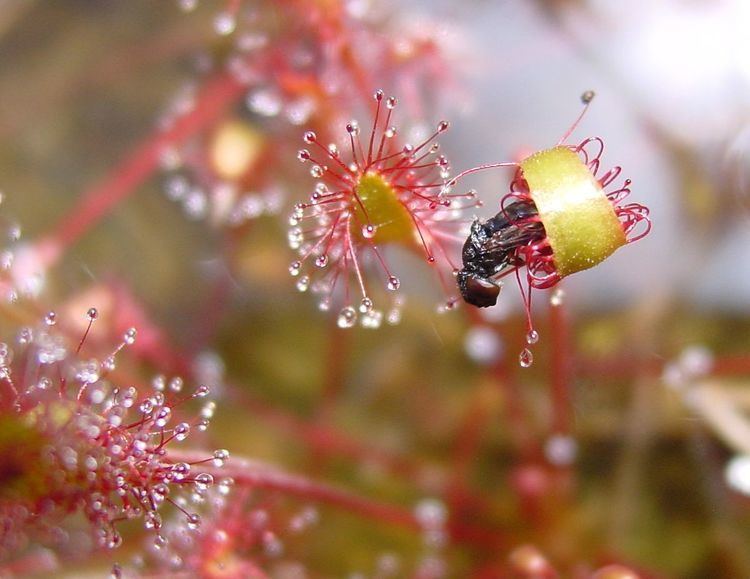 | ||
Mucilage is a thick, gluey substance produced by nearly all plants and some microorganisms. It is a polar glycoprotein and an exopolysaccharide. Mucilage in plants plays a role in the storage of water and food, seed germination, and thickening membranes. Cacti (and other succulents) and flax seeds especially are rich sources of mucilage.
Contents
Occurrence
Exopolysaccharides are the most stabilising factor for microaggregates and are widely distributed in soils. Therefore, exopolysaccharide-producing "soil algae" play a vital role in the ecology of the world's soils. The substance covers the outside of, for example, unicellular or filamentous green algae and cyanobacteria. Amongst the green algae especially, the group Volvocales are known to produce exopolysaccharides at a certain point in their life cycle. It occurs in almost all plants, but usually in small amounts. It is frequently associated with substances like tannins and alkaloids.
Mucilage has a unique purpose in some carnivorous plants. The plant genera Drosera (sundews), Pinguicula, and others have leaves studded with mucilage-secreting glands, and use a "flypaper trap" to capture insects.
Human uses
Mucilage is edible. It is used in medicine as it relieves irritation of mucous membranes by forming a protective film. Traditionally, marshmallows were made from the extract of the mucilaginous root of the marshmallow plant (Althaea officinalis) as a cough medicine. The inner bark of the slippery elm (Ulmus rubra), a North American tree species, has long been used as a demulcent and is still produced commercially for that purpose.
Mucilage mixed with water has been used as a glue, especially for bonding paper items such as labels, postage stamps, and envelope flaps. Differing types and varying strengths of mucilage can also be used for other adhesive applications, including gluing labels to metal cans, wood to china, and leather to pasteboard. During the fermentation of nattō soybeans, extracellular enzymes produced by the bacterium Bacillus natto react with soybean sugars to produce mucilage. The amount and viscosity of the mucilage are important nattō characteristics, contributing to nattō's unique taste and smell.
The mucilage of two kinds of insectivorous plants, sundew (Drosera) and butterwort (Pinguicula), is used for the traditional production of a variant of the yoghurt-like Swedish dairy product called filmjölk.
